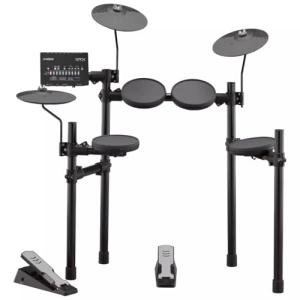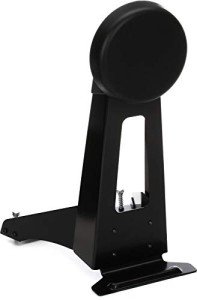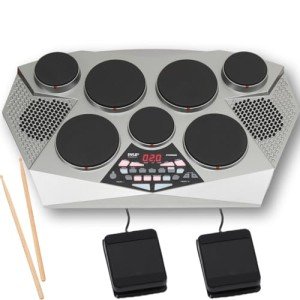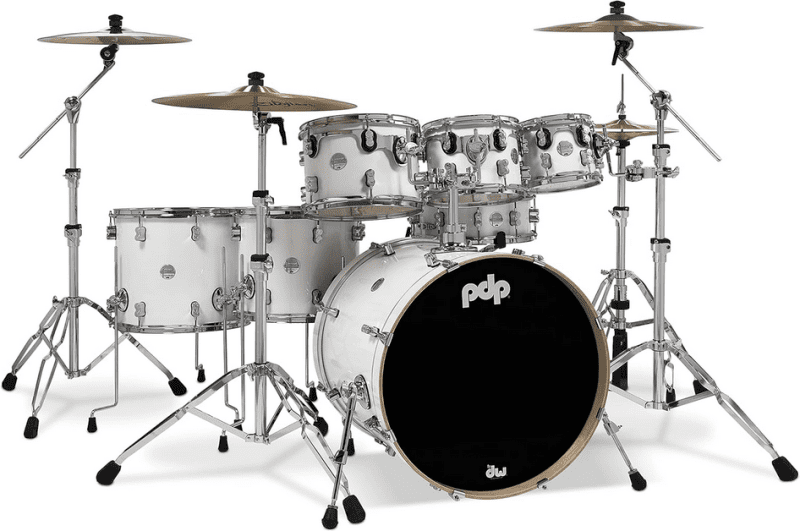Unleashing the Beat: Learning to Play Drums
Are you ready to unleash your inner rhythm and embark on an exhilarating journey into the world of drumming? Learning to play the drums is not just about hitting a few beats; it's an immersive experience that can awaken your musical soul. In this article, we dive deep into the captivating process of learning to play drums, exploring the challenges, the rewards, and the incredible growth you can achieve as a drummer.
From learning basic techniques to mastering complex rhythms, each step of the drumming journey brings new opportunities for self-expression and creativity. Whether you're a complete beginner or have dabbled in drumming before, this article will guide you through the essential skills and techniques needed to become a proficient drummer.
Join us as we explore the world of drumming, uncovering the secrets to creating mesmerizing beats and unlocking your limitless potential as a drummer. Get ready to feel the power of rhythm take hold as we embark on an unforgettable musical adventure. Let's unleash the beat and discover the joy of drumming together.
Benefits of learning to play drums
Learning to play the drums offers a multitude of benefits that go beyond just musical skills. Drumming is a highly engaging and physically demanding activity that can have a profound impact on both your mental and physical well-being.
One of the primary benefits of learning to play drums is the development of enhanced hand-eye coordination and dexterity. The intricate coordination required to simultaneously operate the kick drum, snare, and cymbals, while maintaining a steady beat, challenges your brain and motor skills in a unique way. This improved coordination can translate to better overall physical coordination and agility, which can be beneficial in various aspects of your life.
Another significant advantage of drumming is its ability to relieve stress and promote relaxation. The rhythmic nature of drumming has a calming and meditative effect, allowing you to enter a state of flow and escape the stresses of everyday life. The physical act of playing the drums can also be a form of exercise, as it requires a significant amount of energy and muscle engagement, contributing to improved cardiovascular health and overall physical fitness.
Furthermore, learning to play the drums can stimulate your creativity and boost your confidence. Mastering the art of drumming allows you to express yourself through music, unleashing your inner creativity and providing a sense of accomplishment. As you progress in your drumming journey, you'll experience the thrill of creating your own unique rhythms and patterns, which can be incredibly rewarding and fulfilling.
Different types of drums and percussion instruments
The world of drums and percussion instruments is vast and diverse, offering a wide range of options for aspiring drummers to explore. From the iconic drum set to the myriad of hand drums and auxiliary percussion, each instrument has its own unique characteristics and applications.
The drum set, often considered the quintessential percussion instrument, is a collection of drums and cymbals played with drumsticks. It typically consists of a bass drum, snare drum, tom-toms, and a variety of cymbals, such as hi-hats, ride, and crash cymbals. The drum set provides a versatile platform for creating complex rhythmic patterns and grooves, making it a popular choice for a wide range of musical genres.
Beyond the drum set, there is a rich tapestry of hand drums and percussion instruments that offer a unique and expressive approach to drumming. Instruments like the djembe, cajon, and bongos are played with the hands, allowing for a more intimate and organic connection with the rhythms. These hand drums often have their roots in various cultural traditions and can be used to create intricate and mesmerizing rhythmic patterns.
Auxiliary percussion instruments, such as shakers, tambourines, and cowbells, can also be incorporated into a drummer's arsenal. These instruments add color, texture, and embellishment to the overall rhythmic landscape, allowing drummers to expand their sonic palette and create more dynamic and engaging performances.
Exploring the diverse range of drums and percussion instruments can be a thrilling and enriching experience for aspiring drummers. Each instrument has its own unique tone, feel, and playing technique, offering endless possibilities for musical expression and personal growth. As you delve into the world of percussion, you'll discover the joy of finding the instruments that resonate most with your personal style and musical aspirations.
Essential drumming techniques and skills
Mastering the art of drumming requires the development of a wide range of essential techniques and skills. From basic grip and stroke patterns to complex rhythmic coordination, the journey of becoming a proficient drummer involves a continuous process of learning and refinement.
One of the fundamental aspects of drumming is the proper grip and stroke technique. The traditional grip, where the dominant hand holds the stick in a more vertical position, and the non-dominant hand holds the stick in a more horizontal position, is a common and versatile approach. Alternatively, the matched grip, where both hands hold the sticks in a similar position, can also be employed, particularly for certain playing styles and genres. Developing a comfortable and efficient grip is crucial for maintaining control, precision, and endurance while playing.
Another essential skill for drummers is the ability to execute a variety of stroke patterns, such as the basic single stroke, double stroke, and paradiddle. These foundational patterns form the building blocks for more complex rhythmic structures and grooves. Mastering these stroke techniques allows drummers to develop a solid technical foundation, which can then be applied to more advanced drumming concepts.
Coordination and independence are key components of drumming proficiency. The ability to coordinate the hands and feet to play different rhythmic patterns simultaneously is a hallmark of skilled drummers. Exercises that focus on developing independence between the limbs, such as rudiments and linear drumming, are essential for building this crucial skill. As drummers progress, they can explore more advanced coordination techniques, like polyrhythms and cross-rhythms, to create intricate and captivating rhythmic textures.
Additionally, dynamics and control are vital aspects of drumming. Developing the ability to play with a wide range of volume, from soft and subtle to powerful and explosive, allows drummers to add depth and expression to their performances. Mastering the control of stick height, grip pressure, and overall body movement can contribute to a drummer's dynamic range and musical expressiveness.
The journey of learning to play the drums is an ongoing process of skill development and refinement. By consistently practicing and exploring these essential techniques and skills, aspiring drummers can build a solid foundation and unlock their full potential as rhythmic artists.
Finding the right drum set for beginners
When embarking on the journey of learning to play drums, one of the first and most crucial decisions you'll make is choosing the right drum set. The selection of your first drum kit can greatly impact your learning experience, so it's essential to approach this decision with care and consideration.
For beginners, the ideal drum set should strike a balance between quality, affordability, and suitability for your skill level. Many manufacturers offer beginner-friendly drum sets that provide a great starting point for aspiring drummers. These kits typically include the essential components, such as a bass drum, snare drum, tom-toms, and cymbals, without overwhelming the player with too many options.
When selecting a drum set, it's important to consider the size and configuration of the kit. Smaller drum sets, often referred to as "compact" or "junior" kits, can be an excellent choice for younger or smaller-framed individuals. These kits feature a more manageable size and weight, making them easier to maneuver and transport. As your skills progress, you can always upgrade to a full-sized drum set that offers more versatility and a larger sonic palette.
Another crucial factor to consider is the quality of the drum shells and hardware. While budget-friendly options are available, it's generally advisable to invest in a drum set with well-constructed shells and reliable hardware. This can ensure better tone, tuning stability, and overall durability, which can enhance your playing experience and prevent premature wear and tear on the equipment.
Additionally, the type of cymbals included in the drum set can greatly impact the overall sound and feel of the instrument. It's recommended to look for a kit that features quality cymbals, as these can significantly contribute to the overall musical expression and tone of your drumming.
When selecting a drum set, it's also essential to consider the available space in your practice area and the noise level you can accommodate. Acoustic drum sets can produce a significant amount of volume, so you may want to explore options like electronic drum kits or practice pads if you have limited space or need to keep the noise level down.
By carefully evaluating your needs, budget, and playing environment, you can find the right drum set that will serve as a solid foundation for your drumming journey. Remember, the right drum set can inspire and motivate you to continue learning and growing as a drummer.
Steps to get started with learning drums
Embarking on the journey of learning to play the drums can be an exhilarating and rewarding experience. Whether you're a complete beginner or have some prior musical experience, the process of mastering the drums involves a series of essential steps that will guide you towards becoming a proficient drummer.
The first step in your drumming journey is to acquire the necessary equipment. As discussed earlier, choosing the right drum set or practice pad is crucial. Once you have your instrument, it's time to focus on developing proper technique and grip. Familiarize yourself with the basic grip styles, such as the traditional grip and the matched grip, and practice various stroke patterns to build a solid foundation.
Next, it's important to develop an understanding of rhythm and timing. Start by learning the basic time signatures, such as 4/4 and 3/4, and practice keeping a steady beat. Metronome exercises and rhythmic patterns can be incredibly helpful in developing your sense of timing and tempo. Mastering the fundamentals of rhythm will lay the groundwork for more complex drumming concepts.
As you progress, begin exploring basic drum rudiments, which are the building blocks of drumming. Rudiments like the single stroke roll, double stroke roll, and paradiddle will help you develop dexterity, coordination, and the ability to play more intricate rhythmic patterns. Consistently practicing these rudiments will not only improve your technical skills but also enhance your overall musicality.
Incorporating a variety of drumming techniques, such as the use of the bass drum, snare drum, and cymbals, is crucial for developing a well-rounded drumming style. Experiment with different sticking patterns, limb coordination, and dynamics to create a more expressive and versatile drumming approach.
To solidify your learning, consider investing in professional instruction, either through in-person lessons or online tutorials. A qualified drum instructor can provide invaluable feedback, help you identify and correct any technical issues, and guide you through the progression of drumming skills. Working with a teacher can significantly accelerate your learning process and help you develop a strong foundation.
Remember, learning to play the drums is a journey of continuous improvement and exploration. Be patient with yourself, set achievable goals, and embrace the process of growth. With consistent practice, dedication, and a willingness to learn, you'll gradually unlock the rhythmic secrets of the drums and become a confident and expressive drummer.
 Resources for learning drums: books, online tutorials, and classes
Resources for learning drums: books, online tutorials, and classes
In the digital age, aspiring drummers have a wealth of resources at their fingertips to support their learning journey. From instructional books and online tutorials to in-person drum classes, there is a diverse array of options to cater to different learning styles and preferences.
One of the classic and enduring resources for learning drums is the instructional book. These comprehensive guides cover a wide range of topics, from basic drumming techniques to advanced rhythmic concepts. Some popular and well-respected drum instruction books include "Stick Control" by George Lawrence Stone, "Syncopation for the Modern Drummer" by Ted Reed, and "Groove Essentials" by Tommy Igoe. These books provide step-by-step lessons, exercises, and insights that can be invaluable for aspiring drummers.
In the digital realm, online tutorials and video lessons have become increasingly prevalent and accessible. Platforms like YouTube, Drumeo, and Drumlessons.com offer a vast library of free and paid content, featuring experienced drummers and instructors who share their knowledge and expertise. These online resources often include instructional videos, interactive exercises, and even personalized feedback, making them a convenient and flexible option for drummers of all skill levels.
For those who prefer a more structured and interactive learning environment, in-person drum lessons can be a highly effective approach. Working with a qualified drum instructor, either in a private or group setting, can provide personalized guidance, immediate feedback, and the opportunity to receive hands-on coaching. These lessons can cover a wide range of topics, from technique and rudiments to music theory and performance skills.
In addition to traditional private lessons, many music schools, community centers, and drum shops offer group drum classes. These classes can be particularly beneficial for beginners, as they often create a supportive and collaborative learning environment where students can learn from each other and participate in ensemble playing.
Regardless of the learning resources you choose, it's important to find the approach that resonates best with your learning style and goals. Experiment with different methods, seek out recommendations from experienced drummers, and be open to trying new techniques and resources as your skills progress. By leveraging the wealth of available resources, you can accelerate your drumming journey and unlock your full potential as a drummer.
Tips for practicing effectively and improving drumming skills
Effective practice is the cornerstone of becoming a proficient drummer. While the journey of learning to play the drums can be exciting and rewarding, it also requires dedication, discipline, and a strategic approach to practice. By incorporating the following tips, you can optimize your practice sessions and make steady progress in your drumming skills.
One of the key elements of effective practice is consistency. Establishing a regular practice routine, even if it's for a short duration, is crucial. Aim to practice drums for a set amount of time each day, whether it's 30 minutes or an hour. Consistent practice helps reinforce muscle memory, solidify your technique, and build the endurance necessary for sustained drumming performance.
Structured practice is another essential component. Divide your practice sessions into focused segments, addressing specific areas of development, such as rudiments, time signatures, or coordination exercises. This approach allows you to target your weaknesses, improve specific skills, and track your progress more effectively. Incorporate a mix of warm-ups, technical exercises, and practical application to create a well-rounded practice routine.
Mindful practice, where you actively engage with the music and your own playing, is crucial for progress. Avoid mindless repetition and instead, focus on the quality of your playing. Listen to the nuances of your sound, pay attention to your technique, and make conscious adjustments to improve your performance. This level of engagement will not only enhance your skills but also foster a deeper understanding and appreciation for the art of drumming.
Incorporating a metronome or drum-along tracks into your practice sessions is an excellent way to develop a strong sense of timing and rhythm. The consistent pulse of a metronome or the rhythmic grooves of drum-along tracks will help you internalize the flow of the music, enhance your timing, and improve your ability to play in time. Gradually increase the complexity of the rhythmic patterns and tempos as you progress.
Exploring a variety of musical styles and genres can also be a valuable aspect of your drumming practice. Exposing yourself to different rhythmic patterns, time signatures, and drumming approaches will broaden your musical horizons and help you become a more versatile and adaptable drummer. Experiment with genres like rock, jazz, Latin, and world music to expand your rhythmic vocabulary and musical expression.
Remember, the journey of improving your drumming skills is a continuous process. Be patient with yourself, celebrate your small victories, and don't be afraid to seek guidance from experienced drummers or instructors. By incorporating these effective practice tips, you'll steadily enhance your technical abilities, develop a deeper understanding of rhythm, and unlock your full potential as a drummer.
Joining a band or playing in a group
As you progress in your drumming journey, the opportunity to join a band or play in a group setting can be a transformative and exhilarating experience. Collaborating with fellow musicians not only challenges your drumming skills but also opens up a world of musical exploration and personal growth.
Playing in a band or ensemble setting allows you to apply the technical and rhythmic skills you've developed during your individual practice sessions. It challenges you to adapt your drumming to the specific needs of the group, whether it's keeping a steady beat, locking in with the bass player, or providing dynamic support for the other instruments. This collaborative experience can significantly enhance your overall musicianship and drumming abilities.
Joining a band or group also exposes you to a diverse range of musical styles and genres. Each group will have its own unique musical identity, requiring you to expand your rhythmic vocabulary and adapt your playing to the specific demands of the genre. This exposure to diverse musical influences can broaden your perspective, inspire new creative ideas, and push you to grow as a drummer.
Furthermore, playing in a group setting fosters a sense of camaraderie and shared purpose. Collaborating with other musicians, exchanging ideas, and working towards a common goal can be incredibly rewarding and motivating. The energy and excitement of performing with a band can ignite a new level of passion and commitment to your drumming journey.
When searching for a band or group to join, consider your musical interests and preferences. Look for opportunities in your local music community, such as school bands, community ensembles, or open jam sessions. These settings can provide a supportive and nurturing environment for you to gain valuable experience and build connections with other musicians.
As you navigate the world of group drumming, be open to feedback, willing to adapt, and eager to learn from your fellow musicians. The collaborative nature of playing in a band or ensemble can be a humbling yet enriching experience, as it challenges you to balance your individual drumming style with the collective vision of the group.
Embracing the opportunity to join a band or play in a group setting can be a profound and transformative step in your drumming journey. It allows you to apply your skills in a real-world musical context, foster meaningful connections with other musicians, and ultimately, deepen your appreciation and mastery of the drums.
Conclusion and encouragement to pursue the journey of drumming
As we conclude our exploration into the exhilarating journey of learning to play drums, it's clear that this rhythmic pursuit offers more than just the ability to keep a beat. From the initial challenges of mastering coordination to the joy of finally nailing that complex rhythm, the process of learning drums is as rewarding as it is transformative. Each beat you play and every groove you master is a testament to your dedication and passion.
Remember, the path to becoming a proficient drummer is a continuous rhythm of practice, patience, and perseverance. Embrace the ups and downs, celebrate your progress, and keep pushing your boundaries. Whether you dream of playing in a band, composing your own rhythms, or simply enjoying the personal satisfaction of drumming, the skills and confidence you build along the way will resonate far beyond the drum kit.
So, as you embark or continue on your drumming journey, let the beat guide you, and let your passion drive you forward. The rhythm is not just in the drums but in every step of your musical adventure. Keep drumming, keep learning, and most importantly, keep enjoying the incredible experience of making music.








